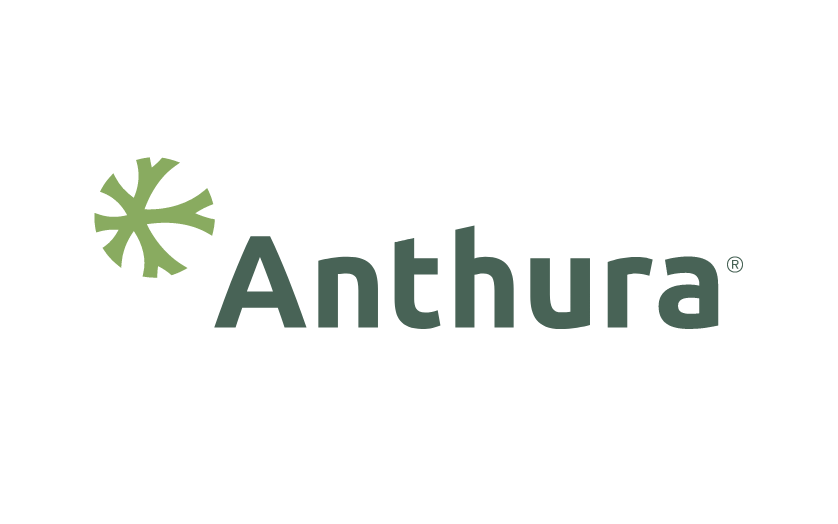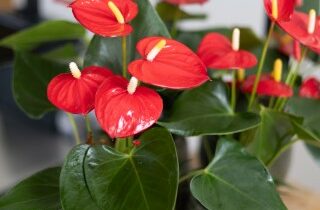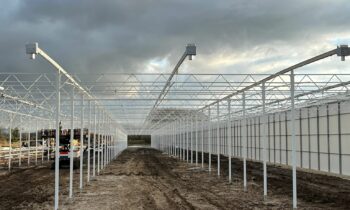Parvispinus thrips (tobacco thrips) has consistently caused problems in Anthurium cultivation worldwide for over two years. This thrips is considerably more difficult to control than the other known Anthurium thrips, such as western flower thrips or Echinothrips americanus. This year, we have seen good results in practice from the use of entomopathogenic (insect parasitic) fungi against tobacco thrips. The effectiveness of the fungi on the pest does vary among the farms where it has been used. As yet, it is not entirely clear why.
Entomopathogenic fungi
Of the more than one million species of fungi found on earth, the majority are plant pathogens. But a still impressive 70,000 fungi, on the other hand, can control insects.
Insect parasitic fungi infect an insect’s exoskeleton with a spore (usually a conidium). The spore germinates (in 9-18 hours), the germination tube penetrates (16-24 hours) and the insect is colonized by the fungus (24-48 hours). After a few days, the insect dies (3-7 days). The physiology of the thrips is disrupted, and the insect starves. Under the right conditions, new spores are formed in or on the insect. High air humidity and not too high temperatures are necessary for good sporulation.
Research on western flower thrips has shown that it is mainly the adult thrips that are susceptible to the fungi and to a lesser extent the larvae and pupae. This may be due to the molting that larvae experience as they transition to another stage. This helps them get rid of the fungus. In practice, effective control can leave dead mouldy thrips on flowers.
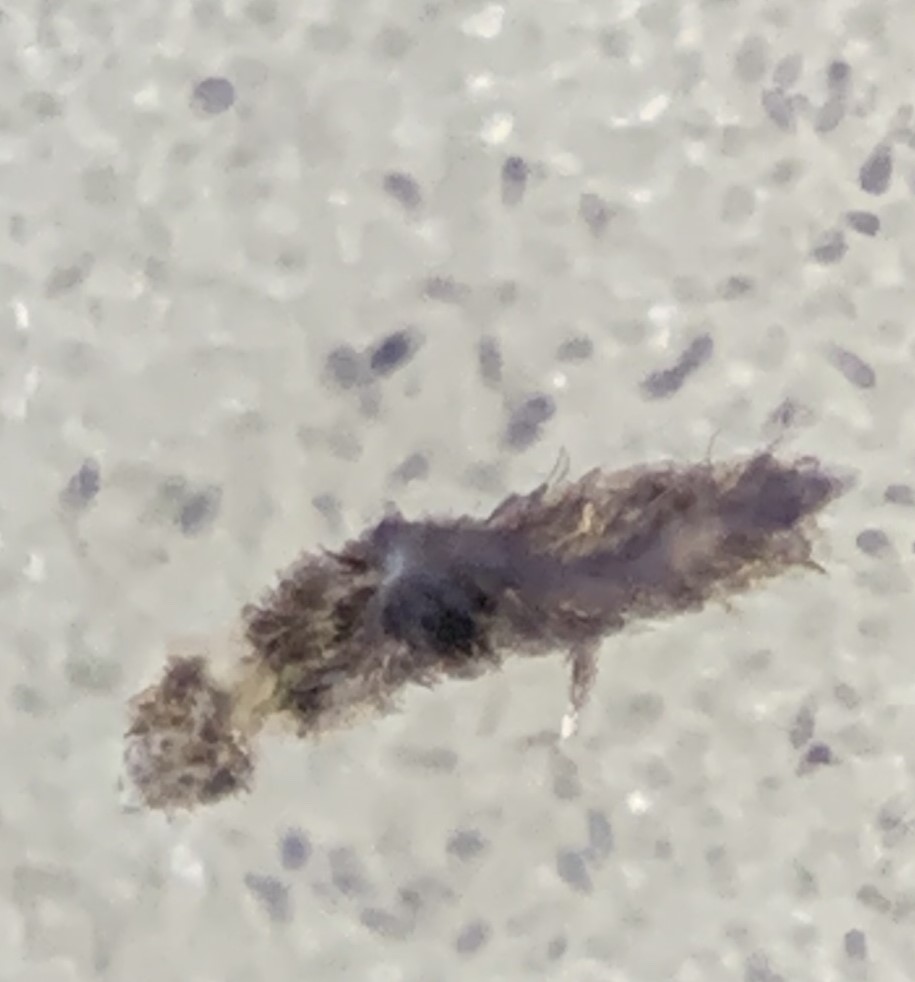
Mouldy female Parvispinus thrips due to Beauveria fungus.
Products
Applicable products contain fungi belonging to:
- Beauveria bassiana or
- Lecanicillium muscarium
The products can be in powder or liquid formulation. In the case of oil-based products, it is advisable to keep an eye on possible phytotoxicity damage Anthurium is sensitive to oily substances. However, application of oil-based products through the LVM has never resulted in damage. It is important to stir the spray liquid regularly during spraying. Application should be done at the end of the day. There can be considerable differences in the number of spores per product unit between products. In the product information, this is shown as colony-forming unit per gram or milligram of product (CFU/g or ml).
Thrips larva overgrown with an insect parasitic fungus.
Biology
The products can be safely used in combination with other biological solutions. Predatory mites and nematodes cannot be controlled by these specific insect parasitic fungi. The chance of resistance to the products is minimal.
Technology
The products can be administered by spraying, LVMs and with a cold Fog (< 46°C). The major advantage of space treatment is that it requires less labour, and crop penetration in full crops is often better than in the case of spraying. The ease with which products can be administered via the LVM depends, among other things, on the type of cap used. Liquid products are generally easier to use for LVM application.
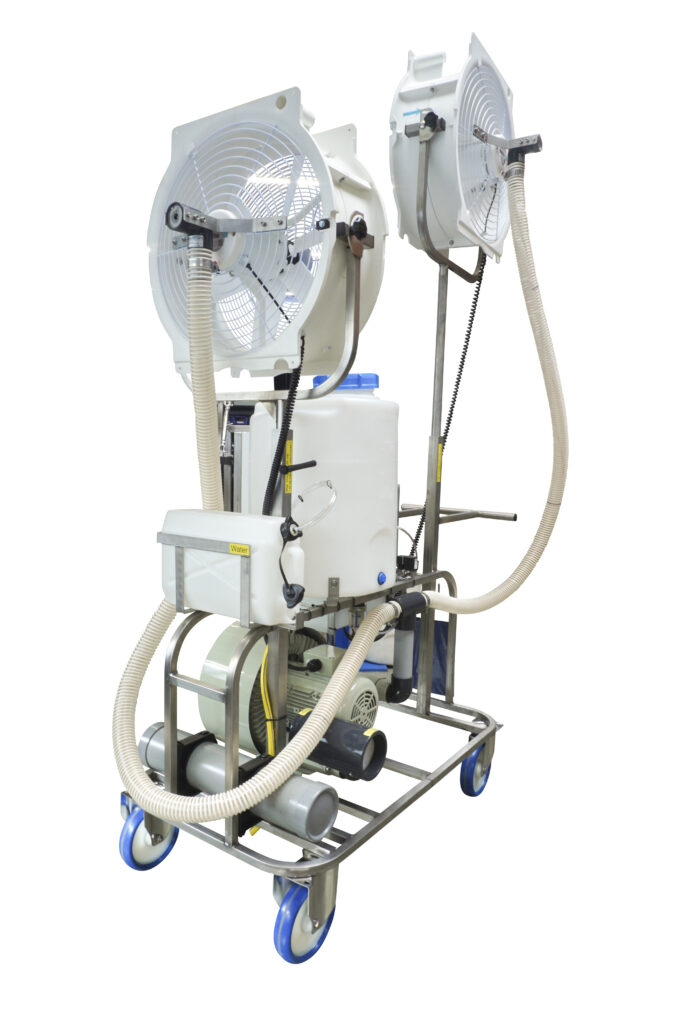
LVM constitutes a user-friendly method of administration.
Use an effluent when spraying the products and a carrier in the case of space treatment. When performing a space treatment, you should use as much liquid as possible. As the temperature increases, the next treatment should take place earlier. Treatment every 3-4 days during the summer season is recommended, as the cycle duration of Parvispinus thrips is less than 14 days. Adult insects are then most likely to come into contact with the fungi.
Crop contamination may be an issue in the case of the wrong dose and/or wrong application of the effluent.
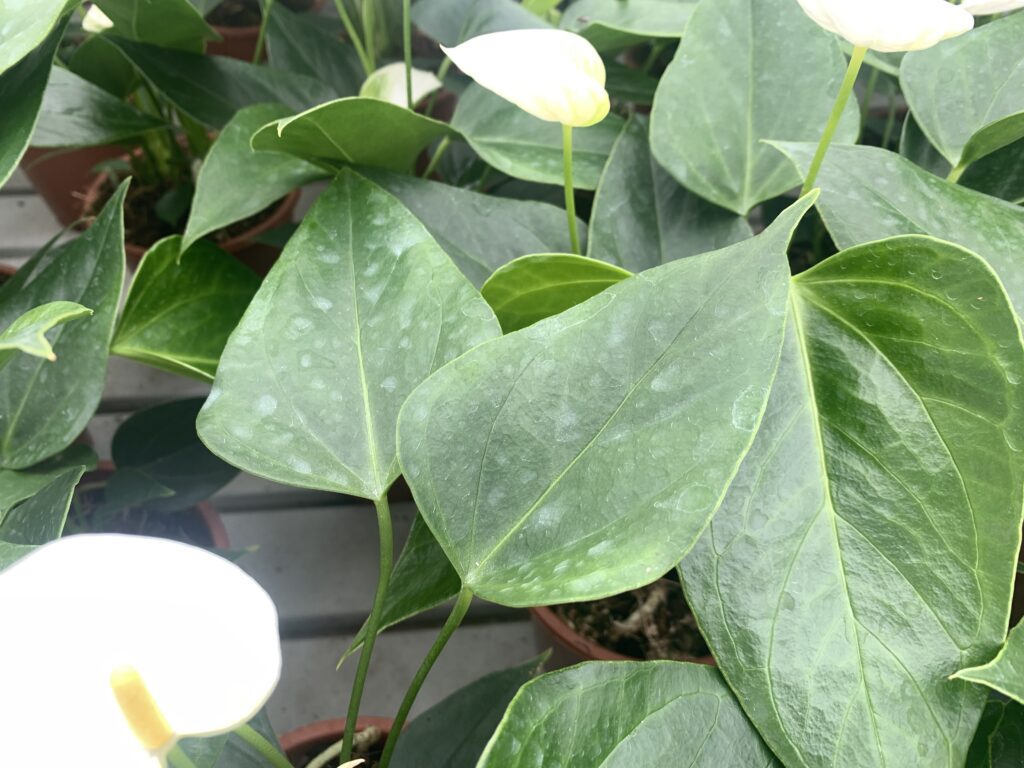
Crop contamination
The products are only effective through direct contact. You should start when the thrips infestation is low. After preparing the spray solution, it is best to use it immediately, because after a few hours in the spray solution the spores start germinating. After spraying, the crop must dry out. This allows the fungal spores to adhere well to their prey. Avoid overhead watering for the first 12 hours after administration. Temporarily higher air humidity also has a positive effect on spore germination.
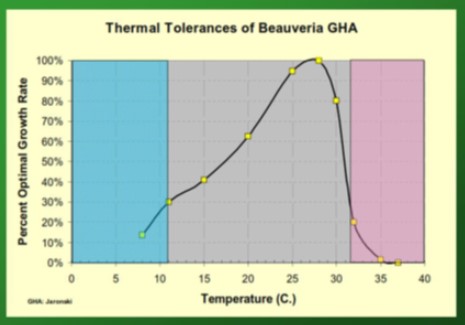
Beauveria development rate in relation to temperature (source: Botanigard from Certisbelchim )
Onderzoek
In the Netherlands, Wageningen University & Research is conducting a study on the effect of entomopathogenic fungi on Pavispinus thrips in Anthurium. This is part of the project launched in 2021 on controlling invasive thrips in floriculture. Read more about the research here.
